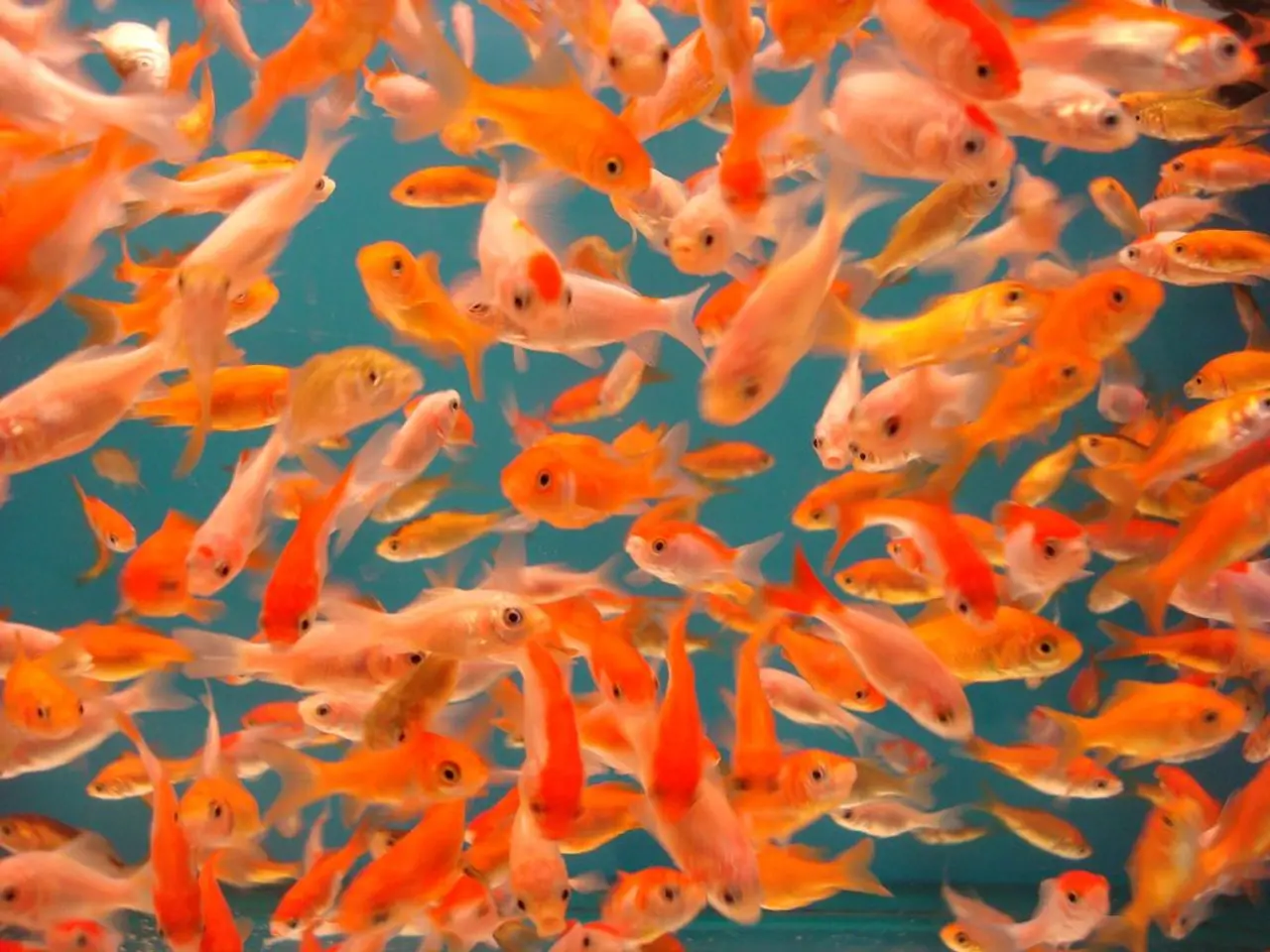Ancient rivers in Australia now house vibrant microorganisms responsible for the rose-colored lakes' hue
In the remote landscapes of Western Australia, two remarkable bodies of water, Lake Hillier and Pink Lake, captivate visitors with their unique pink hues. These lakes, remnants of rivers that flowed across the landscape over 15 million years ago, are home to a diverse array of salt-loving microorganisms, including Dunaliella salina and Salinibacter ruber.
These microorganisms produce a pigment called beta-carotene when exposed to sunlight, turning the lakes different shades of pink depending on their salt levels. However, the pink color of these lakes is under threat, with climate change and human activities taking their toll.
Lake Hillier experienced significant disruption in 2022 due to extreme rainfall, diluting its salt content and altering its microbial community. As a result, the lake shifted from its characteristic pink color to a blue-gray. Experts believe that if salinity levels return to previous concentrations, Lake Hillier may recover its pink hue within about 10 years.
In contrast, Pink Lake, located near Esperance, has suffered long-term and likely permanent damage from salt mining activities over the 20th century. The extensive extraction for table salt, livestock salt licks, meat preservatives, and more depleted the lake's salt concentration to the point where pigment-producing microbes such as Dunaliella salina and Salinibacter ruber could no longer survive. Since the 2000s, Pink Lake has remained a blue-gray.
Restoration efforts for Pink Lake face major challenges, and natural recovery is considered unlikely without artificial intervention like pumping salt from nearby lakes. Scientists have suggested this approach to return Pink Lake to pre-mining levels.
Angus Lawrie, a conservation biologist and research associate at Curtin University in Australia, emphasised the resilience of the organisms found in these pink lakes, stating that they produce some of the toughest organisms on the planet.
Pink lakes are valuable ecosystems, hosting nomadic and migratory birds, brine shrimp, salt lake snails, and more. They are of interest to scientists as they help us understand the potential for life on Mars.
However, the future of these iconic lakes remains uncertain. Heavy rainfall can dilute the lakes' salt content, potentially upsetting their regular inhabitants and causing the lakes to turn colors other than pink. Locals have even lobbied for Pink Lake to be renamed due to its color change.
As we continue to grapple with the impacts of climate change and human activities, it is crucial to protect these unique and remarkable ecosystems. The pink lakes of Western Australia serve as a reminder of the delicate balance between nature and human impact, and the potential consequences of disrupting that balance.
References:
[1] ABC News. (2022, February 10). Lake Hillier turns blue-grey after extreme rainfall. Retrieved from https://www.abc.net.au/news/2022-02-10/lake-hillier-turns-blue-grey-after-extreme-rainfall/100936780
[2] ABC News. (2020, March 11). Pink Lake's colour change due to lack of salt caused by century-long mining. Retrieved from https://www.abc.net.au/news/2020-03-11/pink-lake-colour-change-due-to-lack-of-salt/12041862
[3] National Geographic. (2020, April 2). The pink lake that's turning blue. Retrieved from https://www.nationalgeographic.com/science/article/pink-lake-turning-blue-climate-change-australia-esperance
The pigment-producing microorganisms found in the pink lakes, such as Dunaliella salina and Salinibacter ruber, are the product of environmental-science studies. Yet, these microorganisms' survival and the health-and-wellness of these pink lakes are under threat from climate change and human activities, as exemplified by Lake Hillier's color change in 2022 and Pink Lake's long-term damage from mining.




